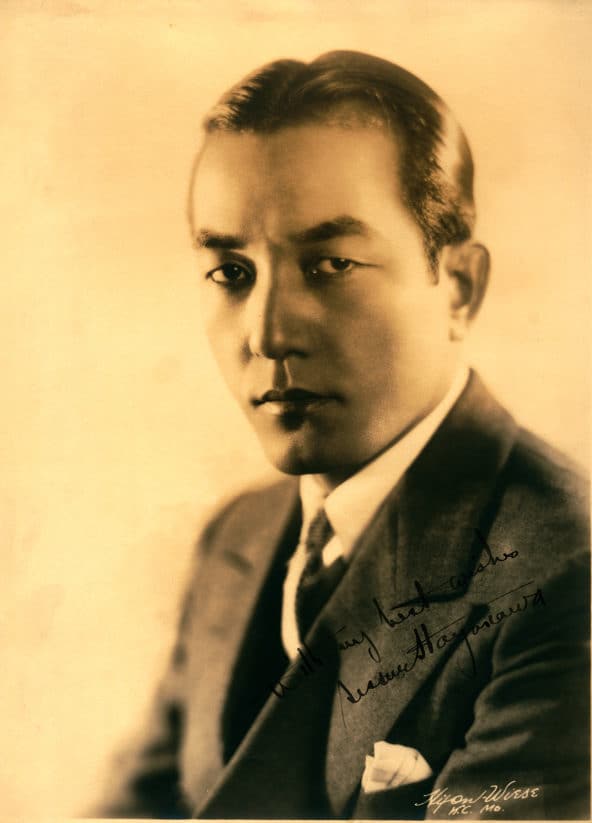Vaudeville

Photo Credit: Hennepin County Library
Sessue Hayakawa
Japanese actor and matinée idol
Excerpts from Asian Cinevision:
In the 1910s and 1920s, Japanese actor Sessue Hayakawa was one of the biggest stars of silent Hollywood. His fame was on par with that of Charlie Chaplin. Often cast as a forbidden lover or sexually dominant villain, like in his breakout role in The Cheat (1915), Hayakawa had a huge fan base of mostly white women, and at his peak, was paid up to $2 million a year. For context, that is equivalent to roughly $28 million today. He was so successful that, in 1918, he started his own movie studio, Haworth Pictures, which produced vehicles specifically for him. He had total control over the twenty-three films that Haworth made, producing, starring in, and contributing to the design, writing, editing and directing of the movies. Very often, he would star opposite a white woman, most notably the serial actor Marin Sais, whom Hayakawa personally chose to be his leading lady. Unfortunately, due to anti-miscegenation laws at the time, Hayakawa very rarely, if ever, got to “get the girl.” This was so well known that in 1957, while interviewing Hayakawa, Joe Franklin quipped, “there were two things we were sure of in the silent movie era; the Indians never got the best of it, and Sessue Hayakawa never got the girl.” The only times Hayakawa did wind up with a romantic interest at the end was when he starred opposite his wife, Japanese actor Tsuru Aoki, in The Dragon Painter (1919).
Nevertheless, Hayakawa persevered, eventually making a successful transition to “talkies,” and achieving fame outside the United States. In 1930, for instance, he performed a one-act play, Samurai, for Great Britain’s King George V and Queen Mary. He also became immensely popular in France. According to the University of Oregon Professor Daisuke Miyao in his seminal work on the actor, “Sessue Hayakawa: Silent Cinema and Transnational Stardom,” he was “enthusiastically embraced” by the French. Likewise, Miyao notes how German audiences found him to be “sensational.” Hayakawa wound up making several films in both countries, such as the German Japanese co-production The Daughter of The Samurai (1937) and the French drama Yoshiwara (1937). His output during World War II was scarce, seeing how he was fighting in the French Resistance, but that changed when he starred as the villain in Humphrey Bogart’s Tokyo Joe (1949). This was closely followed by Three Came Home (1950), and arguably his most famous role as Colonel Saito in David Lean’s Bridge on The River Kwai (1957). The story of a group of British prisoners of war being forced to build a bridge in Japanese-occupied Burma, the film was a smash hit, raking in $27 million against a $2.8 million budget. It also won seven Academy Awards, including Best Picture, and earned Hayakawa an Oscar nomination for Best Supporting Actor, making him the first Asian performer ever to be nominated. After this film, Hayakawa largely retired from acting, occasionally appearing in supporting roles like in Disney’s “Swiss Family Robinson” (1960) and the animation “The Daydreamer” (1966). Finally, on November 23, 1973, Hayakawa died in Tokyo at the age of 87.
For more on Sessue Hayakawa visit: https://www.asiancinevision.org/sessue-hayakawa-americas-forgotten-sex-symbol/